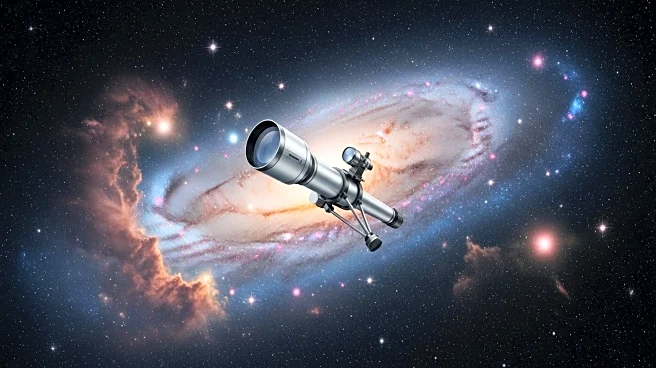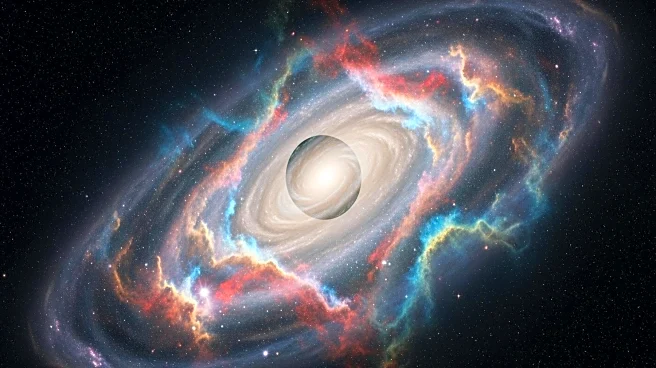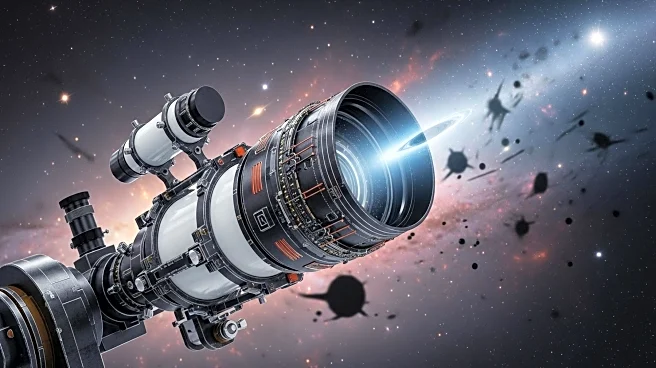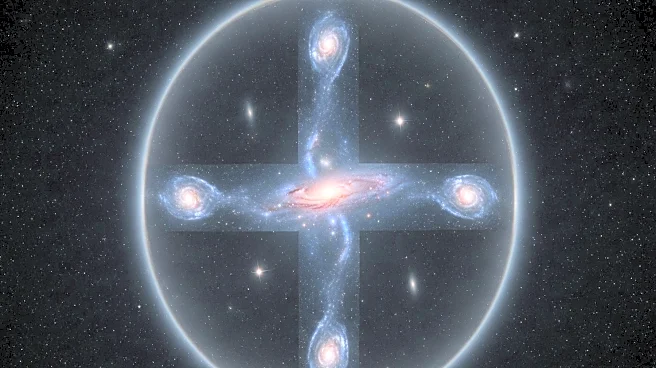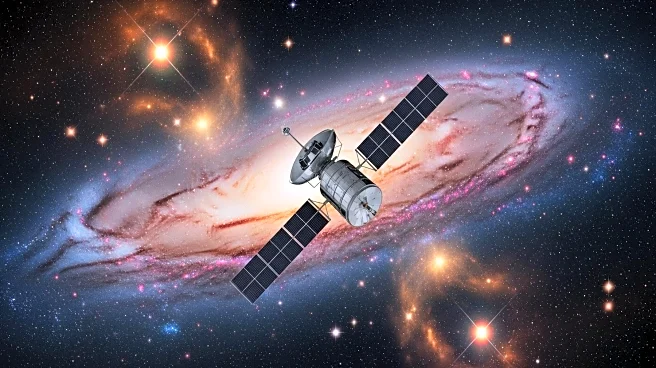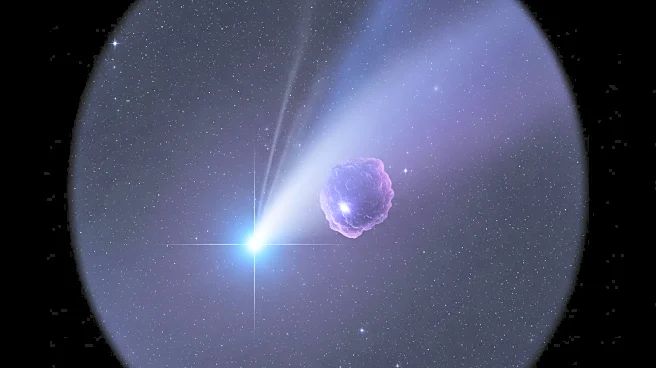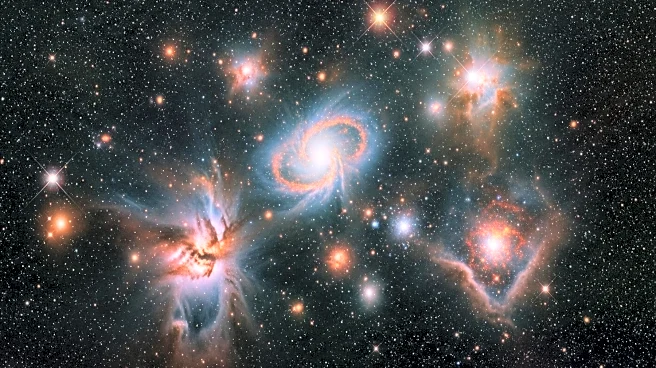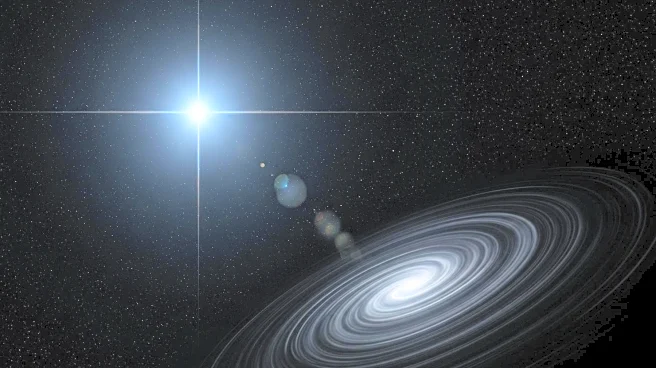What's Happening?
NASA's Chandra X-ray Observatory has discovered a black hole growing at an unprecedented rate, located in a quasar about 12.8 billion light-years from Earth. This black hole, named RACS J0320-35, is estimated to be growing at a rate exceeding the Eddington limit, which is the theoretical maximum rate at which a black hole can accumulate mass. The discovery was made possible through X-ray observations that revealed the black hole's growth rate, which is between 300 and 3,000 solar masses per year. This rapid growth challenges existing theories about black hole formation and suggests that such black holes could have originated from massive stars or dense gas clouds with low metallicity.
Why It's Important?
The discovery of RACS J0320-35's rapid growth provides critical insights into the formation and evolution of black holes in the early universe. Understanding how black holes can grow so quickly after the big bang is essential for astrophysics, as it may reveal new mechanisms of black hole formation. This could impact theories about the universe's evolution and the role of black holes in galaxy formation. The findings also contribute to the understanding of quasar activity and the conditions that lead to the creation of jets of particles moving at near-light speed, which are rare in quasars.
What's Next?
Further research will focus on understanding the conditions that allow such rapid growth of black holes. Scientists will continue to analyze data from Chandra and other observatories to refine models of black hole formation and growth. The study of RACS J0320-35 may lead to new theories about the initial mass of black holes and the processes that enable them to exceed the Eddington limit. Additionally, the implications of these findings could influence future astronomical surveys and the search for similar phenomena in the universe.
Beyond the Headlines
The discovery raises questions about the rarity of conditions that allow such rapid black hole growth. It suggests that unique environmental factors, such as low metallicity in gas clouds, may play a significant role. This could lead to a reevaluation of the frequency and distribution of massive black holes in the universe. The study also highlights the importance of advanced X-ray observatories like Chandra in uncovering hidden aspects of cosmic phenomena.

